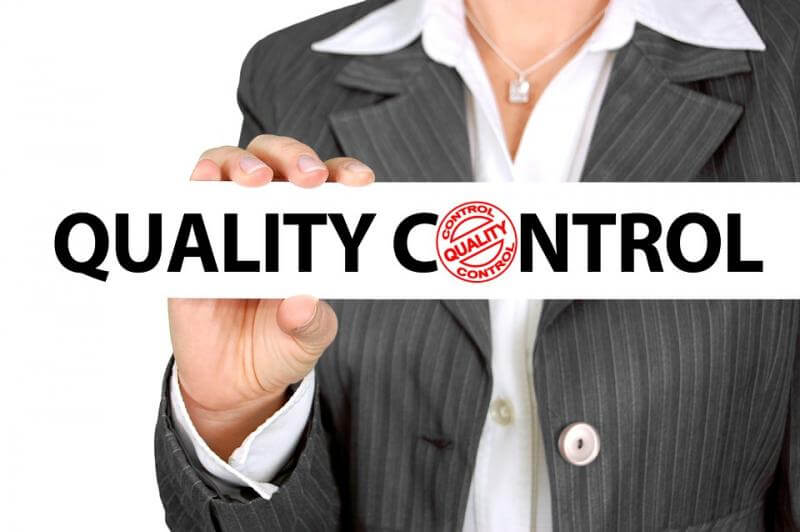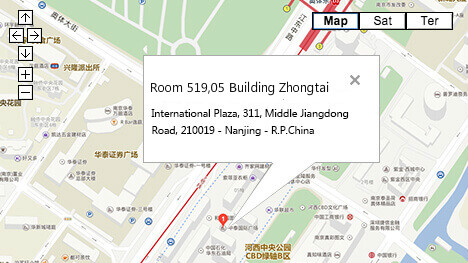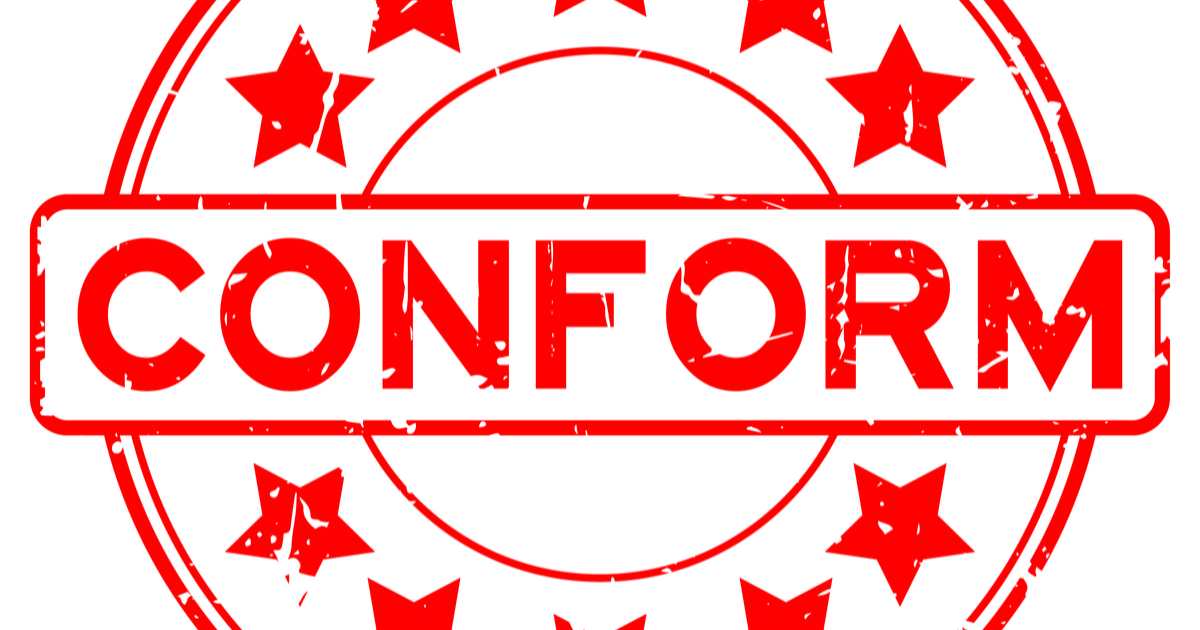Some clients have asked us “what is a certificate of conformity” over the years, and…

CQC Inspections: Room for Improvement
Mon, 10/01/2018 – 3:00am
by Jennifer Lopez, Maetrics
Though the United States produces three quarters of its pharmaceuticals in-country, it is still the world’s largest importer, with the value of imports totalling $86 billion in 2015—twice as much as a decade ago. Pharmaceutical companies must, therefore, manage outsourced suppliers within the U.S. and throughout the globe, ensuring that the products or services received satisfy industry standards for quality and regulatory compliance.

Director of Solutions Delivery, Maetrics
The Food and Drug Administration’s guidance for an effective quality management system states, “The pharmaceutical company is ultimately responsible to ensure processes are in place to assure the control of outsourced activities and quality of purchased materials.” However, maintaining supplier quality can be challenging and complicated. This article sheds light on the potential vulnerabilities in outsourcing and how these can be overcome.
Warning Letters
Warning letters identify serious problems within quality systems. The FDA reports the number of warning letters issued to pharmaceutical companies in 2017 remains significantly above 2013 levels, highlighting a concerning increase in violations of Current Good Manufacturing Practices (cGMPs).
If companies carry out their due diligence properly, then an issue serious enough to warrant a warning letter should be detected by the company. Though it is true that audits may fail to detect a problem as they are a snapshot in time and assess specific samples, a warning letter suggests a real breakdown in a company’s quality system; large-scale issues are unlikely to be missed by an auditor, regardless of the time period or sample. In particular, a major contributor to warning letters is the vast level of the supply chain as there are multiple processes and stakeholders involved in making and distributing each product.
Each new supplier must be audited for potential risk, and categorized as low, medium or high risk. To do this, companies carry out one or more types of audit, most commonly: a desk audit; an on-site audit; a qualification audit; and a for-cause audit.
Qualification audits take place at the initial stages of a supplier relationship and analyze the supplier’s capabilities, quality systems, and their ability to deliver. For-cause audits have a smaller scope as they are required to investigate specific issues as they arise, such as a late delivery or a failure to meet specifications. Companies may not have sufficient resources to carry out extensive and detailed audits that go beyond a desk audit.
Alternative measures of quality control, such as reviewing certificates from a Notified Body or giving the supplier a questionnaire to fill in, can be utilized. However, there is added value in conducting on-site visits at supplier premises in order to perform an effective audit, something many companies are failing to do.
Keeping Up
In addition be carried out to a satisfactory level, audits must also be done regularly to ensure timely risk identification and to reflect company changes. There may be many changes within supplier companies during an audit cycle, necessitating more frequent audits, so contracting organizations need to stay abreast of developments within their supplier base.
Pharmaceutical companies also need to ensure quality is maintained during internal changes. During mergers and acquisitions, or when there is increased financial pressure, companies are forced to downsize their quality units, and compliance is often pushed to the bottom of business priorities, meaning that there is inadequate scrutiny of suppliers. Moreover, a change in ownership, and therefore, philosophy can have an impact on the way the supply chain and compliance are managed. Businesses should remain alert to any lapses.
Business Size
Smaller companies often do not have the internal talent and skill sets required to truly understand different aspects of quality and auditing. One example from my experience is a small company that gave quality management duties to someone who had no background in the field or in quality. This is highly risky as the consequences of unsatisfactory quality can be damaging to a company’s bottom line and reputation in the long-term.
It is, therefore, better to invest in adequately qualified, trained, and experienced specialists from the offset. Preferably, quality professionals should work with partners or in a team to allow for the exchange of ideas and ensure thorough oversight.
For larger companies, audits tend to be a routine procedure that can be carried out internally. They also have the budgets for on-site audits where necessary. However, some companies carry out audits or have what they consider to be the right level of oversight, but in reality, they are simply checking boxes and there is no real value to their activities.
One indication of this is when audits are carried out, but the auditors continually fail to identify problems or areas for improvement, and therefore, no progress is made. For large or medium-sized companies that have budgets to work with, but limited staff to travel and make on-site visits, one solution is to enlist an outsourced provider that is able to send quality professionals to strategic locations. This allows for full-time equivalent (FTE) savings and allows companies to focus on internal quality responsibilities.
Categorizing Risk
For each audit, there must be a specific set of criteria for auditors to follow in order to determine whether or not a supplier is approved. Determining the risk category of a supplier depends on many factors, including the type of organization and the type of product. Additionally, an organization can be considered high-risk if a problem with their product or service supply could result in patient harm.
Another example of criteria for critical suppliers is when there is a single source for the supply of a unique product, as any delays or cessation of supply could result in operations closing down or a life-saving product becoming unavailable. A supplier may be deemed low risk when its products are readily available from many different sources and/or problems with sourcing will not result in patient harm.
Even though businesses qualify suppliers as high, medium, or low risk, they are not consistently taking the next step by considering how to adapt their approach for each category. For instance, demanding stricter standards for critical suppliers compared to those that are low-risk. This suggests a lack of understanding about the objectives of quality audits.
Furthermore, both small and large companies often fall behind on audits and this sometimes forces them to re-categorize or adjust requirements, based on factors such as availability for auditing or other resources rather than achieving quality.
Companies have a tendency to evaluate the resources they have and then consider what level of quality they can achieve using these resources; what they should be doing is setting out quality goals in the beginning, and then identifying the steps and resources needed to work towards these goals.
The Stakes
Companies are responsible for their final product which may include elements from suppliers, and yet they do not have the same oversight of their suppliers or their supply chain as they have of their own internal processes. The benefits of robust supplier quality evaluations are far reaching. Pharmaceutical businesses that stay on top of supplier quality are well prepared for regulatory inspections, and are ensuring they stay ahead of slacking competitors.
Best practice in this area provides companies with an overview of both demand and supplier capacity, so they are able to efficiently assess and react to disruptions. Conversely, businesses that fail to stay on top of supplier evaluation risk non-conformances, complaints, corrective and preventive actions (CAPA), or even product recalls.
About the Author
Jennifer Lopez is the director of solutions delivery at Maetrics with over 20 years of experience within pharmaceutical and other life science companies.



This Post Has 0 Comments